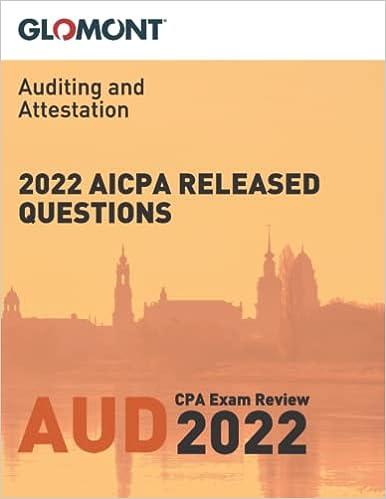Question
The performance snapshot system developed by Deloittethat revolved around the four statements mentioned earlierwas the result of a long process of retooling. The old system
The "performance snapshot" system developed by Deloittethat revolved around the four statements mentioned earlierwas the result of a long process of retooling. The old system had many elements that are common in large firms. Specific objectives were set at the highest levels of the company at the beginning of each year and were "cascaded" down to lower levels. As projects were finished, employees were rated on the degree to which their performance met those objectives. Those ratings were then the subject of discussion at end-of-year "consensus meetings," where employees were given an overall performance score for the year. One of the voices in those consensus meetings was an employee-assigned "counselor" who represented the employee to encourage an accurate and unbiased accounting.
Unfortunately, 58 percent of the Deloitte executives surveyed felt like the system did not increase employee engagement levels. More specifically, the company felt that the old system came up short on some important dimensions. First, the specific objectives that were set at the beginning of the year sometimes became outdated and less pivotal as the year moved on, robbing the system of a certain agility. Moreover, the once-a-year conversation was too infrequent to give employees the feedback they needed, when they needed it. Most importantly, though, Deloitte estimated that it spent 2 million hours a year on the cascading objectives, project ratings, consensus meetings, and conversations about the scores and the system. As Ashley Goodall summarized, "We wondered if we could somehow shift our investment of time from talking to ourselves about ratings to talking to our people about their performance and careersfrom a focus on the past to a focus on the future."
Deloitte also wanted "performance snapshot" statements that were more behavioral than descriptive. That is, the company wanted managers to rate what they themselves would actually doin terms of choosing a person for their team on giving them the highest possible raise rather than rating the skills, qualities, or, characteristics of the person. Deloitte did a thorough review of scientific research on performance evaluations and felt that such behavioral statements could reduce what's called "idiosyncratic rater effects"biases on the part of a boss that can inject noise into ratings. That sort of noise can rob systems of the instrumentality needed to foster high levels of engagement. As she reflects on Deloittc's system, Goodall is encouraged while pointing to one remaining question: transparency. On the one hand,knowing their performance snapshot numbers can trigger conversations between employees and their leaders, while also allowing progress to be tracked over time. On the other hand, being forced to share performance snapshots with employees could cause leaders to "sugarcoat" them. For now. Deloitte encourages employees to focus on the check-ins with their leader and their annual compensation decision. The snapshots remain "for leader eyes only."
1. What do you think of the four statements Deloitte is now using as performance snapshots: "Given what I know of this person's performance, I would always want him or her on my team. This person is ready for promotion today." "Given what I know of this person's performance, and if it were my money, I would award this person the highest possible compensation increase and bonus." "This person is at risk of low performance." Are they sufficient? Would you want to add, remove, or change any?
2. The old system relied on more than just the opinions of team leaders, given the importance of objectives, consensus meetings, counselors, and so forth. If you were a Deloitte employee, would you feel comfortable with giving team leaders such a pivotal role in your evaluation (and compensation)?
3. What's your opinion on the transparency issue? Would the system function more or less effectively if all of the snapshot numbers were shared with employees? Why do you feel that way?
Step by Step Solution
There are 3 Steps involved in it
Step: 1

Get Instant Access to Expert-Tailored Solutions
See step-by-step solutions with expert insights and AI powered tools for academic success
Step: 2

Step: 3

Ace Your Homework with AI
Get the answers you need in no time with our AI-driven, step-by-step assistance
Get Started


